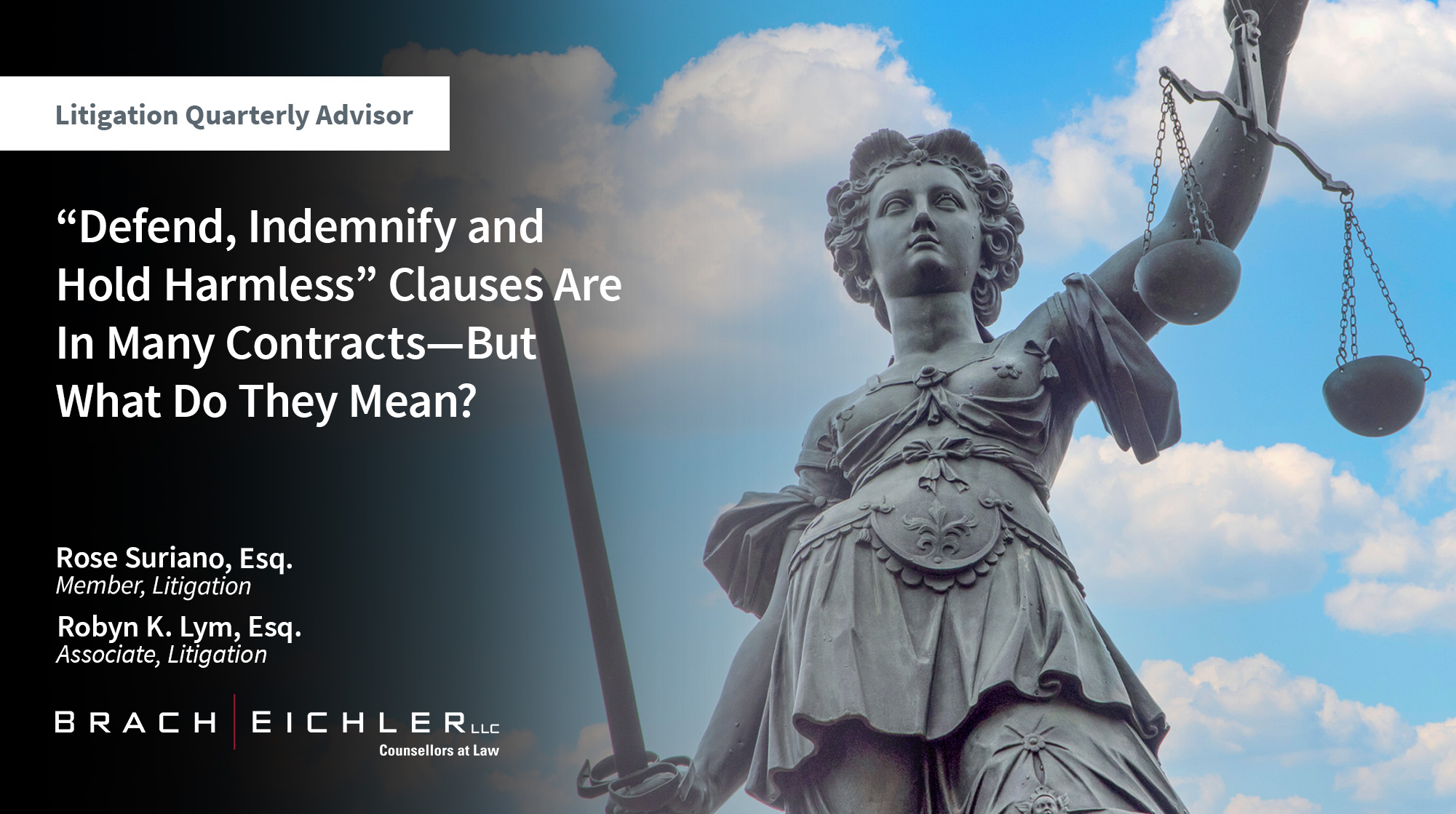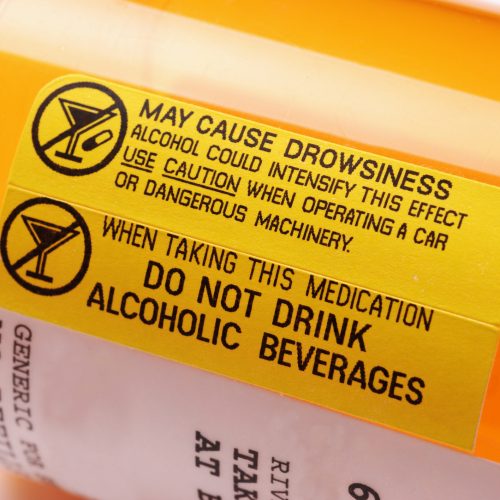“DEFEND, INDEMNIFY AND HOLD HARMLESS” CLAUSES ARE IN MANY CONTRACTS—BUT WHAT DO THEY MEAN?

10/1/2025
The phase “defend, indemnify, and hold harmless” is found in many, if not most, contracts with liability allocation provisions, across multiple industries. However, many parties do not have a complete understanding of what, exactly, these words mean. The meaning of all three terms varies on a state-by-state basis. Some states require an indemnitor to defend an indemnitee. Some states view the duties to defend and indemnify as wholly separate. Understanding the meaning of this common phrase goes a long way toward ensuring that the parties’ risk allocation choices (and, ultimately, their economic deal) are respected, which is important in the best of times, and vital in the worst.
Indemnification
The concept of indemnification imposes an obligation on one party, the indemnitor, to pay or reimburse another party, the indemnitee, for losses covered in the indemnification provision. The obligation to reimburse or pay arises when an actual loss or liability has occurred. Generally, indemnification arises in two ways: through an express contractual provision or implied in the law. When contained in a contract, the courts will honor its plain meaning and the intent of the parties. Generally, if there happens to be any ambiguity surrounding an indemnity clause, including what it means or its scope, it is typically construed by courts against whomever is seeking indemnification.
As to indemnity implied by operation of law, many states including New Jersey, hold that, absent anything to the contrary in a contract, a person is entitled to an implied indemnity when the implied indemnitor is not at fault and still incurs liability due to the wrongful conduct of another. See Cartel Cap. Corp. v. Fireco of New Jersey, 81 N.J. 548, 566 (1980). In Alten v. Ellin & Tucker, Chartered, 854 F. Supp. 283, 288-89 (D. Del 1994), the District Court for the District of Delaware also noted that without an express contractual indemnification provision, a party may still rely on implied indemnity where appropriate, such as where there is a contractual relationship between the parties. Importantly, the party seeking to rely on implied indemnity to recover cannot be at fault.
Defend
The duty to defend triggers an obligation to act when a claim, which is covered by the indemnification provision in the contract, is brought by a party against the indemnitee. Polarome Int’l, Inc. v. Greenwich Ins., 404 N.J. Super. 241, 272 (App. Div. 2008). The independent obligation to defend requires the indemnitor to actually defend, finance a defense, or reimburse the indemnitee against any claim brought against it, regardless of the merits of the claim or the outcome. The differences between the duty to indemnify and to defend, while nuanced, are critically important. The obligation to indemnify arises once a judgment has been entered, whereas the obligation to defend is triggered as soon as a claim is filed against the indemnitee.
Most states, including New Jersey, consider the duty to indemnify and to defend to be distinct obligations.
Hold Harmless
The inherent meaning of “hold harmless” is subject to interpretation. The prevailing interpretation is that “hold harmless” and “indemnify” are synonymous. However, under the minority view, “hold harmless” requires payment of both actual losses and potential liabilities, while “indemnify” protects against incurred losses only. The main difference is that “hold harmless” may require a party to protect against actual losses as well as potential losses while indemnification protects against actual losses only.
In New Jersey courts have generally interpreted the obligations to “hold harmless” and “indemnify” as synonymous. See, e.g., Miller v. Hall Bldg. Corp., 210 N.J. Super. 248, 320 (Law. Div. 1985).
Similarly, certain other states, including Ohio, Colorado, Louisiana and Delaware, hold that “indemnify” and “hold harmless” are synonymous. Alternatively, California sees the two concepts as distinct as shown in Queen Villas Homeowners Assn v. TCB Prop. Mgmt., 149 Cal. App. 4th 1, 9 (Dist. Ct. App. 2007). There, the court categorized the obligations to indemnify and hold harmless as offensive
and defensive rights. Indemnification, according to the court, is “an offensive right—a sword—allowing the indemnitee to seek indemnification.” Id. On the other hand, hold harmless is a defensive measure providing “[t]he right not to be bothered by the other party itself seeking indemnification.” Id. Under this view, hold harmless shields one party from being sued for liability that the other party may incur.














